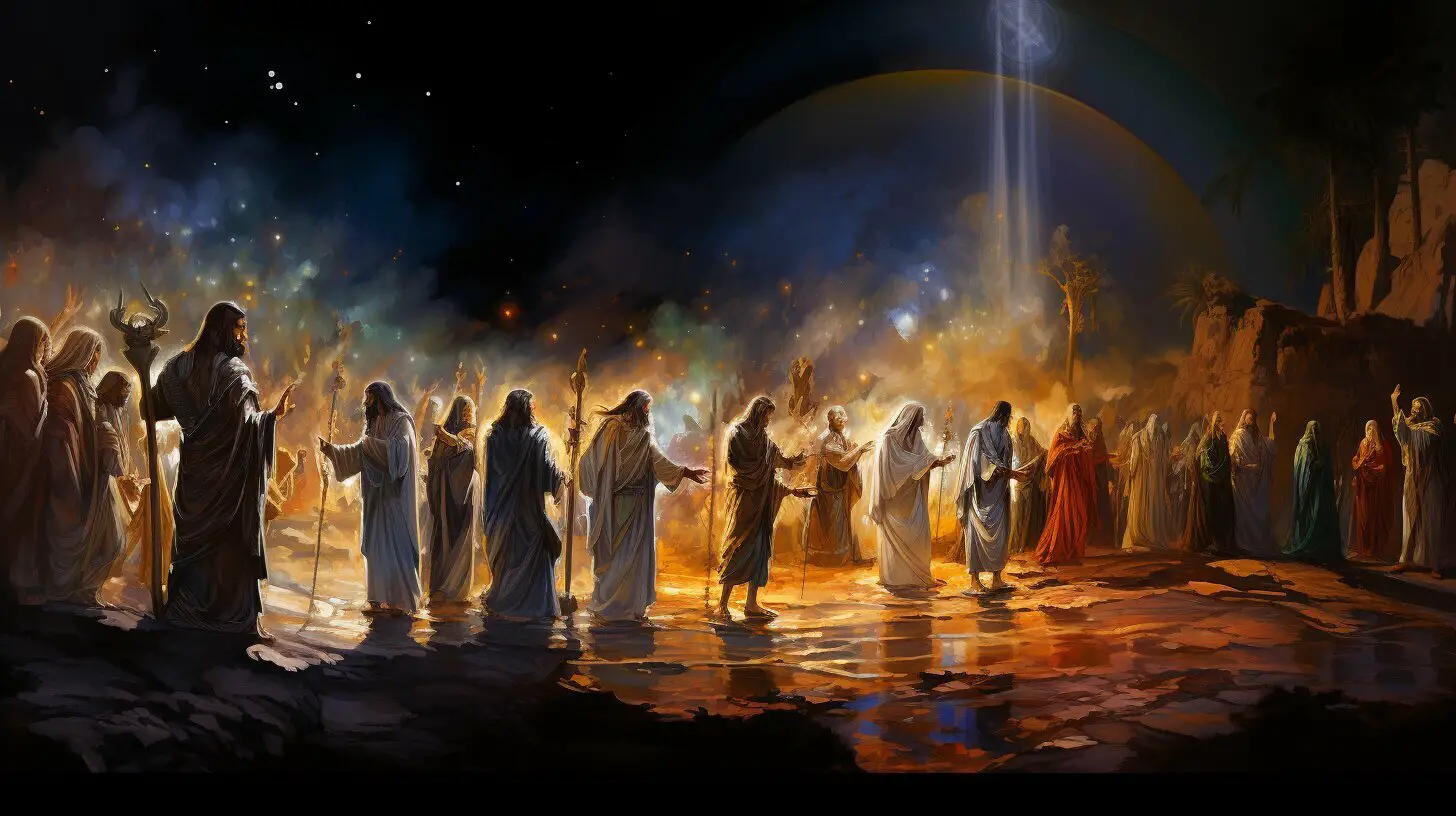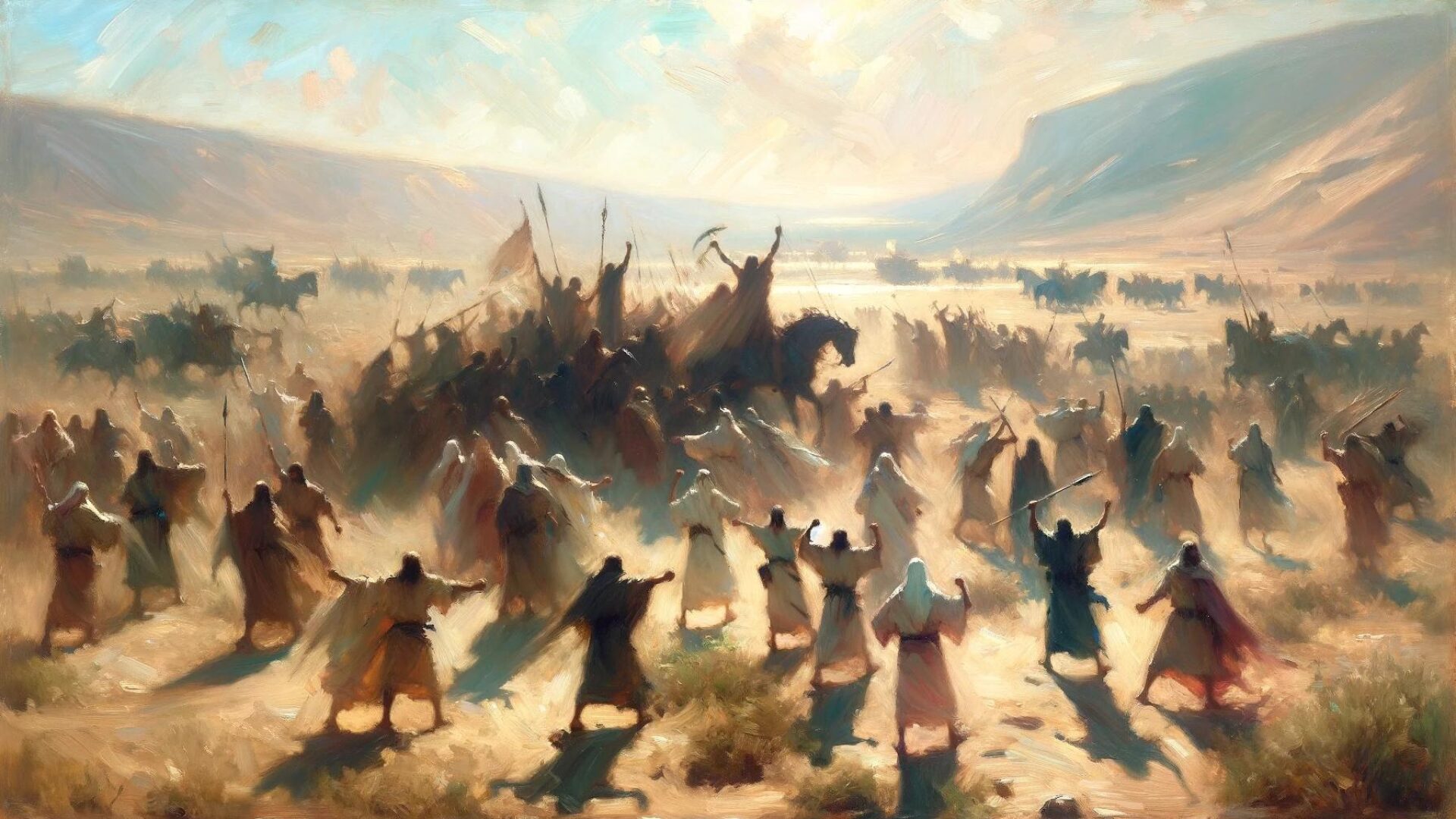The crucifixion of Jesus Christ was a pivotal moment in history that shaped the Christian faith. Set in 1st century Judea under Roman rule, the events leading up to Jesus’ death highlight the socio-political tensions of the time.
After sharing a final meal with his disciples, Jesus was betrayed by Judas Iscariot and arrested. He underwent Jewish and Roman trials on charges of blasphemy and sedition. Despite finding no evidence of wrongdoing, Pontius Pilate bowed to pressure from Jewish authorities and sentenced Jesus to crucifixion.
He was nailed to a cross between two criminals where he suffered immense physical and emotional anguish before taking his final breath. His body was laid in a tomb before his prophesied resurrection on the third day. Jesus’ sacrifice holds deep theological meaning for Christian beliefs on redemption and salvation.
The Historical Context of Jesus’ Crucifixion
The crucifixion of Jesus took place in 1st century Judea, which was then a province of the Roman Empire. At the time, the region was under the rule of the Roman Governor Pontius Pilate, who was appointed by Emperor Tiberius. The province was also under the jurisdiction of the local Jewish authorities, namely the Sanhedrin, which was the highest legal and administrative council in Jerusalem.
The tensions between the Jewish local authorities and the Roman occupation in Judea had been brewing for some time, and the trial and crucifixion of Jesus became a flashpoint in this conflict.
The Political and Religious Climate
The political climate in Judea was characterized by a volatile mixture of nationalism, religious fervor, and resentment towards Roman rule. The Jewish people were eager to reclaim their independence and reunite Israel under their own rule, while also adhering to the strict religious laws that governed their society.
The religious landscape was also complex, with a variety of Jewish sects and groups vying for influence, including the Pharisees, Sadducees, Essenes, and Zealots. Each group had their own interpretations of Jewish law and customs, leading to frequent disputes and clashes.
The Role of the Sanhedrin
The Sanhedrin was a council of Jewish leaders who held both religious and civil authority over the Jewish people. This council was responsible for enforcing Jewish laws and customs, and had the power to impose penalties, including death sentences. However, the Sanhedrin was not authorized to carry out executions, and required the approval of the Roman authorities to do so.
During the trial of Jesus, the Sanhedrin accused Him of blasphemy and presented Him before Pilate, hoping to secure the death penalty. However, Pilate found no guilt in Jesus and attempted to release Him. The Jewish authorities then pressured Pilate to crucify Jesus, using the charge of sedition against Roman rule as a pretext for His execution.
The historical context of Jesus’ crucifixion is complex and multifaceted, with political, religious, and social factors all playing a role in the events leading up to His death. Understanding this context is essential for grasping the significance of Jesus’ sacrifice and its enduring impact on Christian theology.
The Last Supper and Betrayal
The Last Supper, where Jesus shared his final meal with his disciples, took place on the night before his crucifixion. During the meal, Jesus predicted that one of his disciples would betray him. This revelation shocked the disciples, who each inquired whether they were the betrayer. Judas Iscariot, one of the twelve apostles, ultimately revealed himself as the traitor.
After the meal, Jesus and his disciples went to the Garden of Gethsemane to pray. While there, Judas arrived with a group of soldiers and identified Jesus by greeting him with a kiss. The soldiers then arrested Jesus, and he was taken to stand trial.
“Then Judas, one of the twelve, arrived, accompanied by a crowd with swords and clubs, who had come from the chief priests, the scribes, and the elders. His betrayer had arranged a signal with them, saying, ‘The man I shall kiss is the one; arrest him and lead him away securely.’ He came and immediately went over to him and said, ‘Rabbi.’ And he kissed him. At this they laid hands on him and arrested him.”
The Significance of the Last Supper and Betrayal
The Last Supper and Judas’ betrayal hold significant meaning in the timeline of Jesus’ crucifixion. The Last Supper is a representation of Jesus sharing his body and blood with his disciples, symbolizing his ultimate sacrifice. Judas’ betrayal also represents the fulfillment of Old Testament prophecies that predicted that the Messiah would be betrayed by a close friend. The betrayal ultimately led to Jesus’ arrest and crucifixion, making it a crucial moment in Christian theology.
The Trials and Sentencing
After the Garden of Gethsemane arrest of Jesus, he was brought before the religious authorities, including Caiaphas the high priest. Accused of blasphemy, Jesus was questioned about his teachings and followers. Witnesses were brought forward, but their testimonies were inconsistent and unreliable.
Jesus remained silent during much of the proceedings, frustrating the authorities. Eventually, Caiaphas demanded that Jesus declare whether he was the son of God, to which Jesus responded affirmatively.
The questioning continued through the night, and in the morning, Jesus was brought before the Roman governor, Pontius Pilate. The religious authorities accused Jesus of sedition, claiming that he was a threat to Roman authority. Pilate was initially skeptical but eventually agreed to hear the case.
During his appearance before Pilate, Jesus was accused of defying Roman authority and claiming to be the King of the Jews. Pilate questioned Jesus about these charges, but Jesus refused to answer, leading Pilate to believe that he was guilty.
Despite finding no evidence of wrongdoing on Jesus’s part, Pilate ultimately caved to the demands of the religious leaders and sentenced Jesus to death by crucifixion.
The Role of Barabbas
One unusual aspect of Jesus’s trial was the release of a prisoner in honor of Passover. Pilate offered to release either Jesus or a notorious criminal named Barabbas. The crowd, incited by the religious leaders, demanded the release of Barabbas, and Pilate acquiesced, sentencing Jesus to death instead.
This decision has been interpreted in different ways over the years. Some believe that Pilate was reluctant to execute Jesus but was forced into it by the religious authorities and the crowd. Others argue that Pilate was simply a weak leader who caved to pressure from the people around him.
Regardless of his motives, Pilate’s decision set in motion the events that would ultimately lead to Jesus’s crucifixion and death.
The Crucifixion and Death
Following His sentencing, Jesus was led to Golgotha, also known as the Place of the Skull. Here, He was nailed to a wooden cross and left to die alongside two criminals.
The physical suffering Jesus endured was immense. The weight of His body pulled down on His arms, causing excruciating pain in His shoulders and wrists. His feet were also nailed to the cross, making it difficult for Him to breathe properly. As time went on, He grew weaker and weaker, and the pain intensified.
Perhaps even more difficult to bear than the physical agony was the emotional pain. As Jesus hung on the cross, He spoke the famous words, “My God, my God, why have you forsaken me?” (Matthew 27:46, NIV). These words reveal the depth of His anguish as He felt momentarily separated from God the Father.
After several hours, Jesus finally breathed His last breath and died. At that moment, the sky turned dark, and the earth shook. Those present were stunned, and even the Roman centurion who oversaw the execution declared, “Surely he was the Son of God!” (Matthew 27:54, NIV).
Jesus’ body was taken down from the cross and placed in a tomb. This was to fulfill the prophecy that He would rise from the dead on the third day (Matthew 12:40).
Conclusion
Throughout this article, we have explored the timeline and historical context of Jesus’ crucifixion, delving into the key events and crucial moments that led to His ultimate sacrifice. From the Last Supper and betrayal by Judas Iscariot to the trials and sentencing by religious and political authorities, we have examined the process that led to Jesus’ crucifixion.
We have also explored the actual crucifixion itself, discussing the physical and emotional suffering Jesus endured and the significance of His final words. We have examined the reactions of those present and the immediate aftermath of His death.
The Significance of Jesus’ Crucifixion
Throughout Christian theology, Jesus’ crucifixion holds immense significance. It is seen as the ultimate sacrifice, through which humanity is redeemed and saved. Jesus’ willingness to endure such suffering and sacrifice himself for the greater good is viewed as the ultimate act of love and compassion.
His crucifixion and subsequent resurrection are central to Christian beliefs and practices, highlighting the power of faith and the promise of eternal life. The story of Jesus’ crucifixion holds deep meaning for Christians around the world, inspiring hope and strength in times of adversity.
In conclusion, Jesus’ crucifixion remains an essential part of Christian history and tradition. By exploring the timeline and significance of His sacrifice, we gain a deeper appreciation for the message of love and hope that it embodies.
FAQ
Q: What is the significance of Jesus’ crucifixion timeline?
A: The timeline of Jesus’ crucifixion is significant because it provides a chronological account of the key events and crucial moments that led to His ultimate sacrifice. It helps us understand the historical context and the societal implications of His death.
Q: What factors played a role in Jesus’ crucifixion?
A: The crucifixion of Jesus was influenced by the political and religious climate at the time. These factors, including the actions of religious authorities and the Roman government, led to His eventual crucifixion.
Q: What happened during the Last Supper and betrayal?
A: The Last Supper was Jesus’ final meal with His disciples, where He shared important teachings and instituted the practice of communion. Following the Last Supper, Jesus was betrayed by Judas Iscariot, one of His disciples, which played a significant role in the timeline leading to His crucifixion.
Q: What trials and sentencing did Jesus go through?
A: Jesus went through a series of trials before religious and political authorities, including the Sanhedrin and Pontius Pilate. He faced various charges, such as blasphemy, which ultimately led to His sentencing and subsequent crucifixion.





